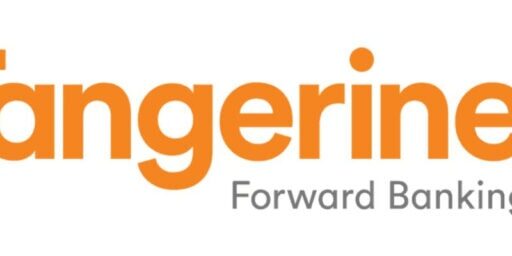Smith Maneouvre Portfolio – June 2008
Time again for the monthly Smith Manoeuvre Portfolio update, June 2008 edition.
For those of you just joining us, The Smith Manoeuvre is a Canadian wealth strategy that utilizes a home equity loan to invest in income producing assets. The result is a tax deductible loan and portfolio that increases as you pay down your mortgage.
The markets are currently in correction mode which means it may be a good time to add to my positions. All the financial yields are up. It seems that some economists are predicting a global market crash, however, don’t let that phase you. If the markets do correct, see it as a good time to jump in!
Onto the business at hand, the portfolio. In terms of trading, the Bank of Nova Scotia position was doubled in addition to a small new position in the fundamental index ETF for U.S small-mid caps. Along with that, we initiated small new positions in BMO and a mutual fund management company that I was eyeing last month, AGF Management.
| Stock | Symbol | Shares | Avg Buy Price | Total | Div/Share | Yield |
| Royal Bank | RY.T | 75 | $47.62 | $3,571.25 | $2 | 4.20% |
| CIBC | CM.T | 45 | $67.14 | $3,021.25 | $3.48 | 5.18% |
| Power Financial | PWF.T | 75 | $35.68 | $2,675.75 | $1.25 | 3.50% |
| Scotia Bank | BNS.T | 50 | $46.50 | $2,325.24 | $1.96 | 4.21% |
| Manulife Financial | MFC.T | 50 | $39.42 | $1,971.00 | $0.96 | 2.44% |
| Fortis Properties | FTS.T | 50 | $27.30 | $1,365.00 | $1 | 3.66% |
| TransCanada Corp | TRP.T | 50 | $36.87 | $1,843.25 | $1.44 | 3.91% |
| FTSE RAFI US 1500 Small-Mid ETF | PRFZ.US | 20 | $51.50 | $1,029.99 | $0.42 | 0.82% |
| AGF Management Limited | AGF.B.T | 50 | $22.71 | $1,135.49 | $1.00 | 4.4% |
| Bank of Montreal | BMO.T | 25 | $44.17 | $1,104.24 | $2.80 | 6.34% |
Total Portfolio Cost Base: $20,042.46
Total Dividends / Year: $796.75
Portfolio Dividend Yield: 3.98%
As you can see, the portfolio is still heavily weighted in financials, but it’s starting to get diversified into utilities like TRP and FTS, along with a small position in the U.S small-mid cap index. I’m looking into more ways to diversify the portfolio, and still meet the CRA tax rules for a leveraged investment loan. One goal of the portfolio is to have a larger growth portion. Any ideas?
Stay tuned, the June net worth update will be posted later today.
I've Completed My Million Dollar Journey. Let Me Guide You Through Yours!
Sign up below to get a copy of our free eBook: Can I Retire Yet?










I had been trying to search differences between XDV and CDZ for quite some time, and I found this:- http://www.canadiancapitalist.com/2006/10/22/xdv-versus-cdz
Both have Rothman’s but CDZ has more percentage of it than XDV according to the above link.
CDZ has income trusts, so with the changes in trust rules, will that be an issue?
CDZ has low volume than XDV. But of course, it’s criteria to hold stocks is better than XDV as it only adds stocks that have a history of increasing their dividends rather just the ones that pay more. It has almost double the amount of stocks than XDV.
Also, another difference is due to Questrade. QT buys whole shares automatically as a part of their automatic Dividend Reinvestment Plan (DRIP) and my goal is long-term investment so I like this DRIP option. However, CDZ has monthly dividends while XDV has quarterly dividends.
At 100 shares:
XDV pays out approx. 21 cents a share as dividend every quarter, and QT will buy 1 whole shares for me at it`s current price (say, $14.40), while for the same price of CDZ and 7 cents dividends every month, QT will not buy anything.
At 1000 shares each:
QT will automatically buy 14 shares of XDV while it will only be able to buy me 4 shares every month (12 shares every quarter) for CDZ. Not a big difference and you probably get better cost averaging with CDZ but in the end less shares get bought in the long-run and you pay more MER (0.60 vs XDV`s 0.50MER).
I am leaning more towards XDV though. Question for everyone? For tax-purposes since these are all in non-RRSP accounts, what’s the benefit of keeping either of these two ETFs vs the individual dividend-paying stocks if you are only adding the positions, say, twice a year? Is all income from these ETFs considered dividend income? This december I received the dividends on 31st December for all my iShares ETFs (XIU, XMD, XRE, etc.) and each one was marked as “Trust Income”. Is that treated as Interest income/capital gains/ or is that considered as Dividend Income?
XDV and CDZ choose their holdings differently. XDV is more of a Canadian dividend index, CDZ only holds companies that have increased their dividends consistently over the last 5 years.
Yes that fund MER is definitely higher than CDZ. Currently I’m not adding to my “Smith” positions, i want to take it slow and make sure it does work with CRA. It is my first year.
How would one choose between CDZ and XDV or even individual stocks?
CDZ pays out monthly with 0.60% in fees
ZDV pays out quaterly with 0.50% in fees
Hey Paul, if CDZ has the same holdings as your mutual fund except with a lower MER, then it may be worth your while to switch. However, you need to take into account transaction costs. How often do you add to your position? Remember, every time you buy an ETF (or add to a position), you will have to pay a commission where adding to a MF doesn’t cost a thing.
Is this the first year of your “Smith Maneuver” ? I’m in my first year and currently hold Canadian Dividend Mutual Fund, but really thinking to trade it for an ETF (CDZ or XDV). I don’t know why i even bought into this Mutual Fund.
If you are looking to diversify your Canadian dividends in a simple fashion, I would suggest reviewing the iShares Dividend ETF: XDV. Although this may not directly meet your diversification goals it should help with meeting/diversifying the dividend bearing portion of your portfolio.
You should carefully consider whether or not this will increase or decrease your yearly transaction + management costs as well as the impact to your yearly capital gains planning. I keep all my XDV shares in my RRSP and my wife’s RRSP to mitigate the capital gains impacts.
Your growth stock diversification will have to be handled elsewhere however. You might consider SSW as one stock that meets the dual need for sector diversification as well as growth.
That said, I do agree that you need to consider diversification across all your investments rather than one single account. The caveat here being your need to meet the requirements for the CRA tax rules. Which I must point out is near impossible due to how ambiguous they are.
Have you guys heard of ShareOwner? I saw it in the Globe, sounded promising, esp for buying partial shares as you pay down the mortgage
http://www.theglobeandmail.com/servlet/story/RTGAM.20080701.wcarrick0702/BNStory/SpecialEvents2/
http://www.investments.shareowner.com/home/v1/index.html
Telly, you are wise beyond your years. I will take your advice and evaluate the the big picture of my holdings.
FT,
Personally, I don’t worryabout diversifying one particular account. Like you, we hold mostly Canadian financials in our non-registered accounts. It makes the most sense due to the fact that dividends are more advantegeous for tax purposes in a non-reg. account. I think it’s a mistake to create separate allocations for each individual account. Look at your portfolio as a whole (including real estate and your wife’s accounts), for both diversification and asset allocation. As long as financials aren’t running the show overall (which I’m sure they’re not, given the amount of real estate you have), it’s best not to get caught up in trying to diversify every account. At leat that’s my 2 cents.
What is everyone’s opinion of prefered shares? You get the benifit of market gains plus a higher dividend than normal shares. I don’t currently have any in my leveraged account but am starting to consider it.